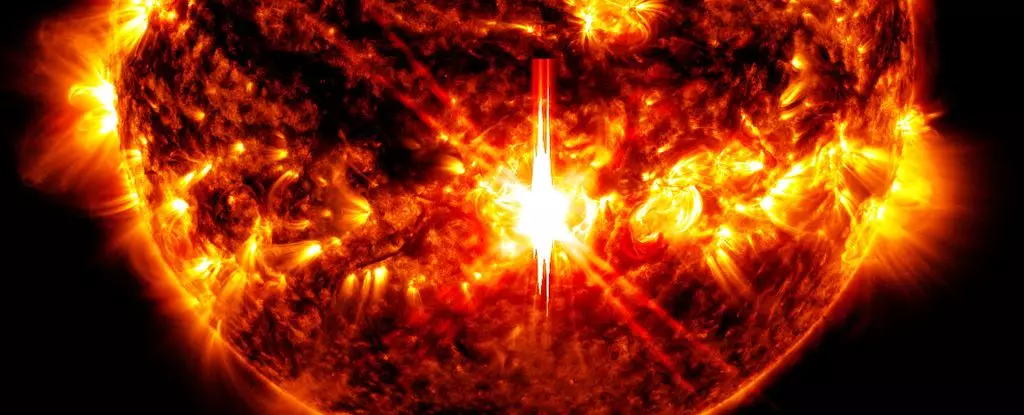On October 3, 2024, an astonishing event unfolded on our solar neighbor, as the Sun released an X9.0 solar flare, marking the most potent eruption witnessed in the last seven years. This intense solar activity was not just a standalone event; it was coupled with a halo coronal mass ejection (CME) directed straight at Earth. At a time when the Sun is at the peak of its 11-year solar cycle, such powerful flares are becoming increasingly common, with solar phenomena erupting almost daily since early 2022. The increase in occurrences, particularly of X-class flares—which are the most potent category—calls for a deeper examination of the dynamics at play and the potential impacts on Earth.
Solar flares originate from sunspots, areas on the Sun’s surface where the magnetic field is significantly stronger. These spots can become highly complex due to the interplay of magnetic field lines of varying polarities, leading to conditions ripe for explosive solar activity. The recent X9.0 flare emerged from an active sunspot region known as AR 3842, which is characterized by a Beta-Gamma-Delta classification. This complexity serves as a recipe for intense solar outbursts, as magnetic forces can become tangled and release vast amounts of energy in the form of radiation.
To understand the implications of such phenomena, it’s essential to appreciate the mechanics behind flares. The reconnection of magnetic field lines within sunspots leads to sudden and dramatic energy releases. When it occurs in a Beta-Gamma configuration, the chances of intense solar activity are considerably heightened, due to the close proximity of oppositely charged magnetic regions. This was demonstrated earlier in October when the same sunspot region emitted an X7.1 flare just days before its more powerful counterpart.
Effects on Earth and Beyond
While solar flares themselves can wreak havoc, their accompanying coronal mass ejections pose even greater risks. The X9.0 flare, with its associated halo CME, can disrupt high-frequency radio communications and interfere with satellite operations. On Earth’s surface, the population remains largely shielded from the immediate dangerous effects of X- and gamma radiation. However, CMEs can interact with the Earth’s magnetosphere, leading to geomagnetic storms that may cause voltage fluctuations in power grids and could require adjustments to satellite navigation systems.
As these solar particles collide with Earth’s magnetic field, they initiate beautiful displays known as auroras. Such phenomena are not only spectacular but also educational, as they demonstrate the tangible effects of solar activity on our planet’s atmosphere. During these outbursts, regions as low as 50 degrees latitude may experience these luminous displays, making it a perfect time for sky watchers to capture an incredible spectacle.
In the wake of the recent X9.0 flare, scientists and enthusiasts alike are buzzing with excitement over the potential for auroras in the coming days. The National Oceanic and Atmospheric Administration (NOAA) has already indicated a forecast of heightened auroral activity due to the impactful CME directed at Earth. Moreover, as the peak of solar activity continues, there may be an increase in further sunspot activity from AR 3842 or potentially new regions evolving on the solar surface.
While the current solar event will not cause significant turmoil, the potential for future flares and CMEs cannot be ignored. The tendency for solar activity to cluster in short succession could lead to even more intense storm conditions. Geomagnetic storms can be particularly potent when multiple CMEs overlap—a phenomenon known as a cannibal CME.
As humanity continues to navigate the technological marvels of satellite communications and man-made infrastructures, awareness of solar activity becomes ever more critical. Understanding solar flares, their potential impacts, and how to react in the event of a geomagnetic storm can help mitigate risks and ensure a higher degree of preparedness.
The recent flare served as a reminder of the power of our nearest star and its ability to affect life on Earth. As we look forward to witnessing auroras in the coming days, it is essential to remember these wondrous phenomena come at a price—the price of our planet’s interaction with solar forces. We must stay informed, celebrate the beauty of nature’s light shows, and respect the dynamic relationship we share with our Sun.


Leave a Reply